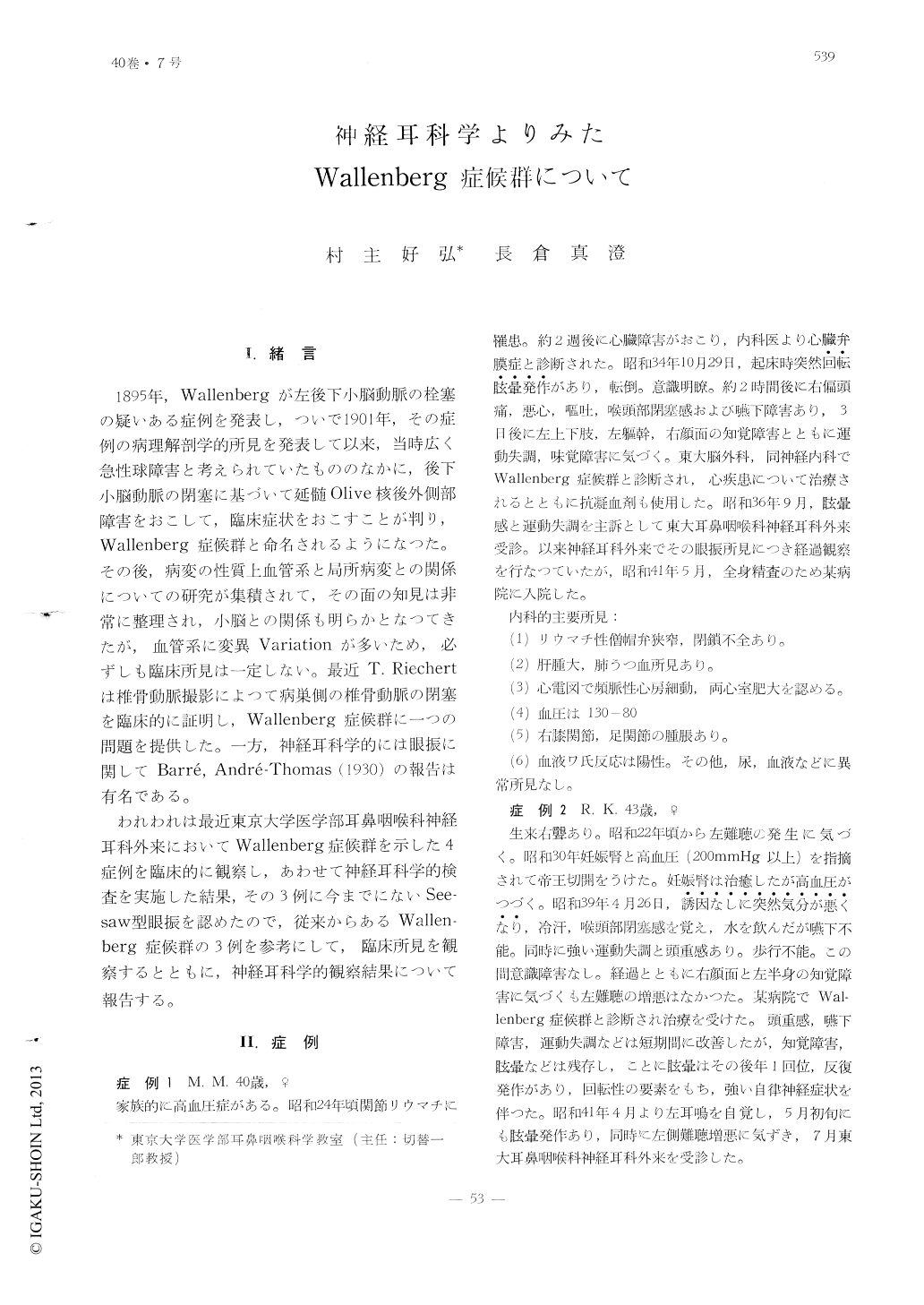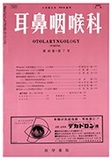Japanese
English
- 有料閲覧
- Abstract 文献概要
- 1ページ目 Look Inside
Ⅰ.緒言
1895年,Wallenbergが左後下小脳動脈の栓塞の疑いある症例を発表し,ついで1901年,その症例の病理解剖学的所見を発表して以来,当時広く急性球障害と考えられていたもののなかに,後下小脳動脈の閉塞に基づいて延髄Olive核後外側部障害をおこして,臨床症状をおこすことが判り,Wallenberg症候群と命名されるようになつた。その後,病変の性質上血管系と局所病変との関係についての研究が集積されて,その面の知見は非常に整理され,小脳との関係も明らかとなつてきたが,血管系に変異Variationが多いため,必ずしも臨床所見は一定しない。最近T. Riechertは椎骨動脈撮影によつて病巣側の椎骨動脈の閉塞を臨床的に証明し,Wallenberg症候群に一つの問題を提供した。一方,神経耳科学的には眼振に関してBarré,André-Thomas(1930)の報告は有名である。
われわれは最近東京大学医学部耳鼻咽喉科神経耳科外来においてWallenberg症候群を示した4症例を臨床的に観察し,あわせて神経耳科学的検査を実施した結果,その3例に今までにないSee-saw型眼振を認めたので,従来からあるWallenberg症候群の3例を参考にして,臨床所見を観察するとともに,神経耳科学的観察結果について報告する。
Observations on 4 cases of Wallenberg's syndrome are made with neurootological examinations: particularly for this report 3 other similar cases were added. In recently seen 3 cases a see-saw nystagmus was found and its rotatory eye movement was recognized to have a tendency to point towards the location of the lesion; however, with horizontal motion it was not necessarily so.
Nystagmus evoked by positional changes of the head was generally regarded as being related to lesions causing disturbances in the function of the brain stem or cerebellum. With optokinetic pattern test (OKP) 3 cases with similar disturbances were recognized, but with the passage of time these symptoms showed a gradual improvement to a complete recovery.

Copyright © 1968, Igaku-Shoin Ltd. All rights reserved.


